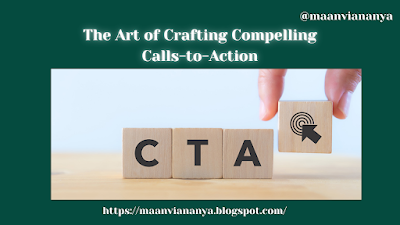Everything Regarding Digital Marketing Ads You Should Know
What is Digital Advertising?
Digital advertising is the powerhouse behind most online marketing efforts today. It sends customers marketing and promotional messages via the internet. This includes a wide range of advertising formats like display ads, search engine ads, mobile ads, and video content across countless platforms.
What types of digital ads are the most successful?
a) Search Ads
These are the ads that appear alongside search results when someone uses a search engine like Google. They are very successful because they are displayed to consumers who are already in the market for comparable goods or services.
b) Display Ads
Display ads are visual-based ads that appear on designated areas of websites, social media platforms, or other digital landscapes. They can be static images or dynamic graphics that catch the eye.
c) Native Ads
Native advertising on websites blends in seamlessly with the content. They are designed to not look like ads and provide a smoother visual experience. This subtlety can lead to higher engagement rates because they don't disrupt the user's browsing experience.
d) Mobile Ads
Mobile advertisements are now essential due to the growing use of smartphones. These can be in-app ads, mobile-optimized web banners, or video ads that appear on mobile devices.
e) Video Ads
Video ads are among the most engaging forms of digital advertising. They can be anywhere from a few seconds to several minutes long and appear on platforms like YouTube, Facebook, and Instagram.
f) Audio Ads
Found on music streaming platforms like Spotify or podcasts, audio ads are an effective way to reach audiences who prefer auditory content.
g) Retargeting Ads
Retargeting ads serve as a reminder for users who have viewed but not purchased goods or services. These ads aim to bring back the 'almost customers' by appearing on different websites they visit afterward.
h) Social Media Ads
These advertisements can be found on various social media sites, including Facebook, Instagram, LinkedIn, Twitter, and more. To target particular demographics, each platform provides advanced targeting options.
i) Influencer Marketing/sponsorship
Partnering with influencers to promote products is an effective way to reach larger audiences in a more organic way. Sponsorships can also include events or webinars.
j) Metaverse Ads
The newest frontier, metaverse ads, exist within virtual and augmented reality environments. They offer immersive experiences that could be the future of digital advertising.
Benefits of Digital Advertising
For businesses to grow, digital advertising is essential because it
Boosts Brand Visibility: Digital ads help increase your brand recognition by showcasing your brand across various platforms and devices, from social media videos to search engine banners.
Enhances Targeting Capabilities: It allows you to target specific demographics, behaviors, and interests precisely, ensuring your ads reach the right people.
Increases Conversion Rates: By targeting the right audience on the right platforms, digital advertising drives relevant traffic to your site, which often leads to higher conversion rates.
Offers Versatility: Digital ads can be tailored to meet different goals like driving sales, increasing registrations, or enhancing brand awareness, with various formats available to deliver your message effectively.
Provides Measurability: Every aspect of a digital ad campaign can be measured, from clicks to conversions, allowing for detailed performance analysis and optimization.
Cost-effectiveness: Digital advertising is often more affordable than traditional methods, with flexible budgeting options and better resource allocation thanks to precise targeting.
Digital advertising isn't just about visibility; it strategically positions your brand to engage and convert consumers, supporting long-term business success.
The Process of Digital Advertising Simplified
Digital advertising involves a series of strategic steps to maximize impact and ROI:
Defining Goals: Start by setting clear, specific goals for what you want your campaign to achieve, like increasing brand awareness or boosting sales.
Identifying the Target Audience: Understand who your ideal customers are, their behaviors, and preferences using tools like Google Analytics.
Selecting the Right Ad Type: Choose the ad format that best suits your audience and goals, such as video ads for engagement or display ads for retargeting.
Creating Compelling Content: Develop ads with engaging headlines, visuals, and calls to action that resonate with your target audience.
Analyzing the Results: Use analytics tools to track your ads' performance and identify what's working or needs improvement.
Future Campaign Optimization: To increase the efficacy of your campaigns in the future, continuously modify and enhance your plan in light of data.
By following these steps, you can create digital advertising strategies that effectively reach and engage your audience, driving the desired actions.
Different Digital Advertising Types and Their Pricing Models
In digital advertising, understanding the various ad formats and their associated pricing models is crucial for effectively managing your marketing budget and achieving your advertising goals. Below is a summary of popular forms of digital advertising along with the most popular pricing schemes:
Pricing Models:
Click-through rate (CPC): You get charged when a user clicks on your advertisement. This paradigm, which is popular for search engine ads and some kinds of social media ads, is excellent for increasing website traffic.
Cost Per Thousand Impressions (CPM): You pay based on the number of impressions (views) your ad receives. This model is typically used for campaigns aimed at increasing brand awareness, where the goal is to maximize exposure.
Cost Per Action (CPA): In this model, you pay when a specific action is taken, such as a sale, a sign-up, or another form of conversion. This is highly effective for performance-driven campaigns where the focus is on generating conversions rather than just clicks or impressions.
Cost Per View (CPV): A well-liked model in video advertising, wherein the number of views or interactions your ad receives determines how much you pay.
Cost Per Engagement (CPE): This newer model charges based on interactions with the ad, such as engaging with a mobile ad’s interactive element. It’s often used in more dynamic ad formats.
Each of these pricing models has its strengths and is chosen based on the campaign objectives, the nature of the product or service, and the target audience's behavior. For instance, CPC might be preferred for direct response campaigns where clicks are a strong indicator of interest, whereas CPM could be better suited for broader awareness campaigns.
Choosing the Right Model
Selecting the right pricing model involves understanding your campaign goals, knowing your audience, and considering the typical customer journey associated with your product. A blended approach—using multiple ad types and pricing models—can often maximize reach and effectiveness, allowing advertisers to leverage the strengths of each model and ad type.
By aligning the ad type and pricing model with your marketing strategy, you can efficiently manage your advertising spend and achieve more meaningful results.
How to Pick the Appropriate Digital Marketing Plan
Selecting the right digital advertising strategy involves a few straightforward steps:
Understand Your Audience: Know their preferences and online behaviors. Gather information by using tools such as Google Analytics.
Check Out the Competition: See what strategies your competitors are using and identify any gaps you can exploit.
Analyze Campaign Data: Review the performance of past campaigns to understand what worked and what didn’t.
Test and Adjust: Continuously test different elements of your ads to see what improves performance. Based on what the data indicates, modify your approach.
Stay Updated: Keep up with the latest trends in digital advertising to ensure your strategies remain effective.
By following these steps, you can tailor your digital advertising efforts to better meet the needs of your audience and achieve your business goals more effectively.
Digital Advertising Trends and Future Outlook
Emerging trends include AI-driven optimization, increased use of augmented reality, and further personalization of ads. A competitive edge can be gained by staying ahead of these trends.
FAQs
What is the most cost-effective type of digital advertising?
Typically, search ads and social media ads offer high ROI, but the most cost-effective type can vary based on your specific business needs.
How can I assess if my digital advertisements are successful?
Metrics such as ROI, click-through rates, and conversion rates can be used to gauge success. Deep insights can be obtained with helpful tools like Google Analytics.
Can small businesses benefit from digital advertising?
Absolutely! Digital advertising is perfect for small businesses because it provides scalable options for any budget.
How often should I review my digital advertising strategy?
Regular reviews at least once a quarter are recommended to tweak and optimize based on performance.
What is the future of digital advertising?
The future points towards more personalized ads, increased mobile and video advertising, and more immersive experiences through AR and VR.
By understanding and utilizing these digital advertising types, businesses can create more targeted and effective marketing campaigns that resonate with their audience and lead to substantial growth. Keep experimenting with different ad types and strategies to find what works best for your unique brand needs.
Maanvi Ananya
Crafting Words that Spark Digital Wonders
📚 Creative Content Maestro | 🌐 Digital Marketing Visionary
🔗: www.linkedin.com/in/maanvi-contentwriter
✍️:https://maanviananya.blogspot.com/
Let's connect the dots between storytelling and strategy for
unforgettable digital experience














